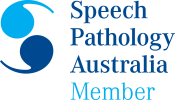What Is Sinusitis?
Sinusitis or sinus infection is a painful condition which can disrupt our daily life. For some, a sinus infection is a temporary problem which will resolve itself after a week or so. However, for others it is a chronic issue with a multitude of symptoms. The sinuses are air-filled spaces within the bones of the face.
The sinuses, also know as, paranasal sinuses, are lined with mucous membranes and have a number of proposed functions including increasing the resonance of the voice, lightening the weight of the skull, humidifying the air we breathe as well as playing a role in our defence against pathogens and foreign substances. The sinuses also act as an airbag in an accident to protect the eyes from injury.
What Causes Sinusitis?
Sinusitis is a term that refers to inflammation and/or infection of the paranasal sinuses and their mucous membrane lining. Sinus infections affect the drainage of the sinus into the nasal cavity and can be acute or chronic in nature. Acute forms of sinus infection usually last around 7 to 10 days. Acute sinus infection is generally caused by an infection with a virus, especially following an upper respiratory tract infection, such as the common cold. Viral sinus infection tends to be of self-limiting nature and will generally resolve itself without the need for intervention.
Less commonly, acute sinusitis can be caused by a bacterial infection with an organism, such as streptococcus pneumoniae, which generally causes an upper respiratory tract infection. Bacterial forms of acute sinus infection tend to last longer than viral sinusitis and may require antibiotic treatment to resolve the infection. Less common causes of sinus infection include fungal infections, infection of the teeth and chemical irritants.
Chronic sinusitis is defined as sinus infection which is more than 3 months in duration. Chronic sinus infection has a number of different causes. It can be the result of a prolonged bacterial or fungal infection, an allergic reaction, or impaired drainage of the sinuses, such as with a deviated nasal septum, as the sinuses drain into the nose. Polyps may also be associated with chronic sinusitis, especially if the inflammation is of an allergic nature. The treatment of chronic sinusitis depends on the cause.
Bacterial infections may be resolved with antibiotics; however, some instances require surgery, such as with mechanical or structural drainage problems. More conservative techniques, such as nasal sprays and irrigation may also help patients who have chronic sinusitis.
Nasal Polyps
Nasal polyps are soft, growths of the lining of the sinuses. They look like grapes. They occur in around 1 in 200 people, mostly by the age of 40 years.
Nasal polyps do not always cause symptoms. As they usually grow through the tunnel that connects the sinuses to the nose, the result is often a blocked nose. More importantly, they can block the passages connecting the nose to the sinus cavities, which can lead to sinus infections.
The cause of nasal polyps is unknown, but inflammation in the sinuses, from allergy or infection, may trigger the growth of polyps. Sometimes sinus and nasal polyps can occur in association with other medical conditions including asthma and allergy to aspirin.
Allergy as a risk factor for sinusitis
Allergy can cause chronic inflammation of the sinuses and mucosal linings. Sinus inflammation prevents the usual clearance of bacteria from the sinus cavity, increasing the chances of developing bacterial sinusitis. If you have allergies, your doctor can advise on appropriate management. Allergy treatment will reduce the risk of developing a sinus infection. Environmental irritants may increase symptoms. People with sinus problems and allergies should avoid environmental irritants such as tobacco, smoke and odours, which may increase symptoms.
Allergy occurs when a person’s immune system reacts to substances in the environment that are harmless for most people. These substances are known as allergens and are found in house dust mites, pets, pollen, insects, molds, foods and some medicines. A substance that is an allergen for one person may not be for another – everyone reacts differently. The likelihood or risk of developing allergies is increased if other family members suffer from allergy or asthma.
When a person who is allergic comes in contact with a particular allergen, an allergic reaction occurs. This begins when the allergen, for example, polle, enters the body, triggering an antibody response. The antibodies attach themselves to special cells, called mast cells. When the pollen comes into contact with the antibodies, the mast cells respond by releasing certain substances, one of which is called histamine. When the release of histamine is due to an allergen, the resulting swelling and inflammation is extremely irritating and uncomfortable.
The most common causes of allergic reactions in Australia are:
- Animals including cats and other furry or hairy animals such as dogs, horses, rabbits and guinea pigs
- Dust mites
- Foods such as peanuts, cow’s milk, soy, seafood and eggs
- Insect stings
- Medications
- Molds
- Pollen
Depending on the allergen and where it enters your body, you may experience different symptoms. For example, pollen, when breathed in through the nose, usually causes symptoms in the nose, eyes, sinuses and throat, allergic rhinitis. Allergy to foods usually causes stomach or bowel problems, and may cause hives (urticaria). Allergic reactions can also involve several parts of the body at the same time.
The Ears, Nose, Sinuses, Throat and Eyes
When allergens are breathed in, the release of histamine causes the lining of your nose to produce lots of mucus and to become swollen and inflamed. It causes your nose to run and itch and violent sneezing may occur. Your eyes may also start to water and you may get a sore throat.
Asthma can sometimes be triggered during an allergic reaction. When an allergen is breathed in, the lining of the passages in the lungs swells and makes breathing difficult. Not all asthma is caused by allergy, but in many cases allergy plays a part.
Most allergic reactions are mild to moderate, and do not cause major problems, even though for many people they may be a source of extreme irritation and discomfort. However, a small number of people may experience a severe allergic reaction called anaphylaxis. It is a serious condition which requires immediate life saving medication.
Some of the more frequent allergens which may cause this are peanuts, shellfish, insect stings and drugs. If you know that you have a very severe allergy, you should have an Anaphylaxis Management Plan from your doctor, which should include an ASCIA action plan for anaphylaxis. These are available from the ASCIA website.
Allergy Management
Effective prevention and treatment options are available. Allergen avoidance, or reduction, relies on identifying the cause of your allergy and then taking steps to reduce your exposure to the allergen. For instance, many people are allergic to dust mites, therefore reducing dust mite in the house is important.
Medications used to treat allergies include:
Antihistamines – these block histamine release from mast cells, thereby reducing many irritating and uncomfortable symptoms. Non-sedating antihistamine tablets rarely cause drowsiness and are available from pharmacies without a prescription. Antihistamine nasal and eye sprays can also be used.
Intranasal cortiocosteroid nasal sprays (INCS) – are very effective for treatment of moderate to severe allergic rhinitis (hay fever) when used appropriately and regularly. A prescription may be required for stronger dose INCS. Ask your pharmacist or doctor for advice.
Medicated eye drops – ask your doctor for advice.
Non-medicated treatments – such as saline sinus rinses and sprays are used for treating allergic rhinitis and sinusitis.
Allergen specific immunotherapy – also known as desensitisation immunotherapy, is a long-term treatment which changes the immune system’s response to allergens. It involves the administration of regular, gradually increasing amounts of allergen extracts, by injections or sublingual drops.
Adrenaline – is used for first aid emergency treatment of life threatening severe allergic reactions (anaphylaxis). Adrenaline is usually given using an adrenaline autoinjector and this can be given without any medical training.
Symptoms of Sinusitis
There are a range of symptoms associated with sinus infection. Pain, headache and feelings of increased pressure in the region of the affected sinus are common presentations of sinus infection. Many people also notice a blocked nose and production of mucus, which may be associated with post-nasal drip, which is a feeling of mucus running down the back of the throat.
Sinus infections can impair our ability to taste foods and our sense of smell. It can also be associated with pain in the teeth and bad breath. Fever and feeling run-down or unwell can also be associated with the condition. Smoking and exposure to other chemical irritants can predispose to sinus infection.
Common signs and symptoms of chronic sinusitis with nasal polyps include:
- A runny nose
- A sense of pressure over your forehead and face
- Decreased or loss of sense of smell
- Facial pain or headache
- Loss of taste
- Pain in the upper teeth
- Persistent nasal congestion
- Postnasal drip
- Snoring
Sinusitis Treatment
Sinusitis is a common condition of varying cause and duration. There are a range of treatment options available. The most appropriate method depends on the cause and severity of the condition. It is important to treat the underlying problems, such as allergy.
Examples of treatments for sinusitis include:
Steam inhalations – use a bowl of hot water with a towel over your head. This will help to thin the mucus and make it easier to drain
Salt water irrigation of the nose – use a sinus rinse bottle filled with saline, bought commercially or made with water, salt and baking soda/sodium bicarbonate – allow to cool before using. Whichever preparation is used, it is important to tilt your head forward, to the right for 10 seconds and then to the left for 10 seconds. This will assist in nasal drainage. For more information on sinus irrigation click here.
Antibiotics – if symptoms persist, appropriate antibiotics should be prescribed for an adequate duration. Often around 10-14 days treatment for acute sinusitis and 3-4 weeks treatment for chronic sinusitis.
Endoscopic Sinus Surgery – in patients with persistent disease, despite medical treatment, surgical removal of diseased sinus tissue, polyps and opening of sinus drainage passages may be required. For more informaton about nose and sinus surgery click here.
If you have questions about sinusitis contact your local doctor who will arrange for you see an ear nose throat surgeon.
The post Sinusitis, Polyps and Allergy appeared first on ENT Clinic Sydney.










